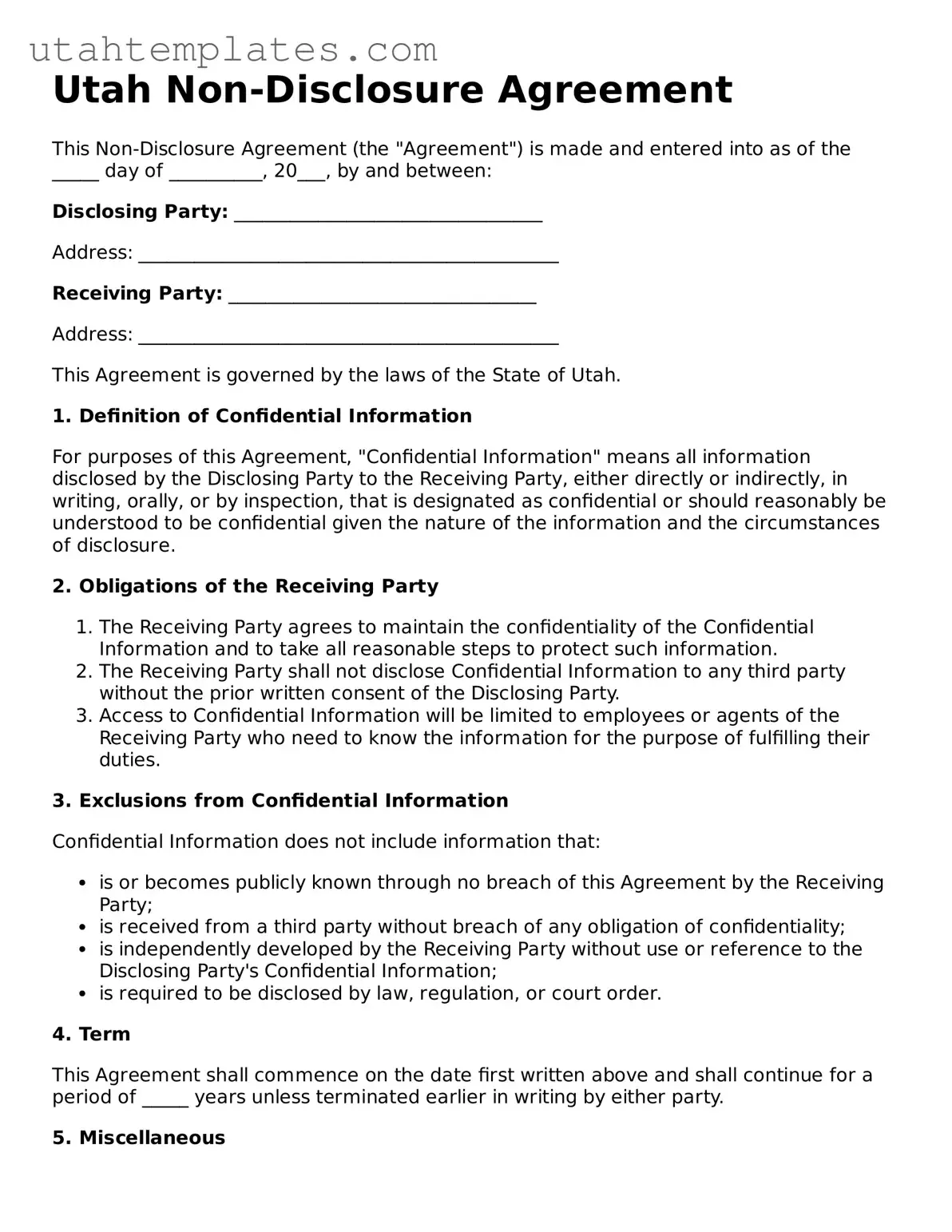Utah Non-Disclosure Agreement
This Non-Disclosure Agreement (the "Agreement") is made and entered into as of the _____ day of __________, 20___, by and between:
Disclosing Party: _________________________________
Address: _____________________________________________
Receiving Party: _________________________________
Address: _____________________________________________
This Agreement is governed by the laws of the State of Utah.
1. Definition of Confidential Information
For purposes of this Agreement, "Confidential Information" means all information disclosed by the Disclosing Party to the Receiving Party, either directly or indirectly, in writing, orally, or by inspection, that is designated as confidential or should reasonably be understood to be confidential given the nature of the information and the circumstances of disclosure.
2. Obligations of the Receiving Party
- The Receiving Party agrees to maintain the confidentiality of the Confidential Information and to take all reasonable steps to protect such information.
- The Receiving Party shall not disclose Confidential Information to any third party without the prior written consent of the Disclosing Party.
- Access to Confidential Information will be limited to employees or agents of the Receiving Party who need to know the information for the purpose of fulfilling their duties.
3. Exclusions from Confidential Information
Confidential Information does not include information that:
- is or becomes publicly known through no breach of this Agreement by the Receiving Party;
- is received from a third party without breach of any obligation of confidentiality;
- is independently developed by the Receiving Party without use or reference to the Disclosing Party's Confidential Information;
- is required to be disclosed by law, regulation, or court order.
4. Term
This Agreement shall commence on the date first written above and shall continue for a period of _____ years unless terminated earlier in writing by either party.
5. Miscellaneous
This Agreement constitutes the entire understanding between the parties regarding the subject matter herein and supersedes all prior agreements. It may only be amended in writing and signed by both parties.
IN WITNESS WHEREOF, the parties hereto have executed this Non-Disclosure Agreement as of the date first above written.
_____________________________ Disclosing Party
_____________________________ Receiving Party
